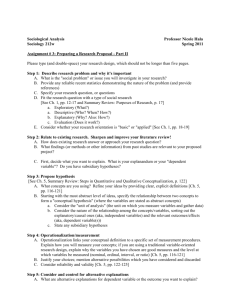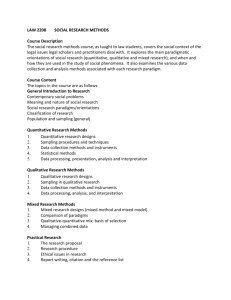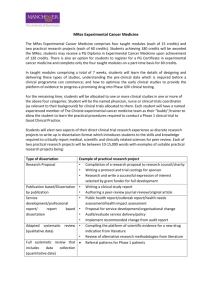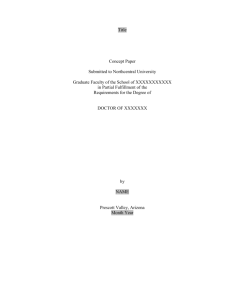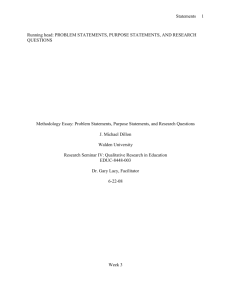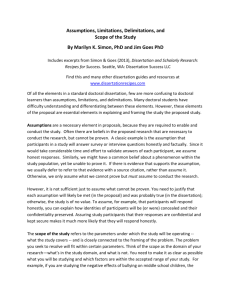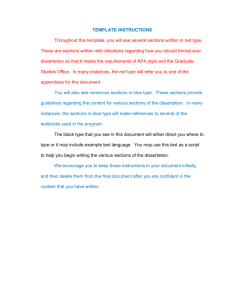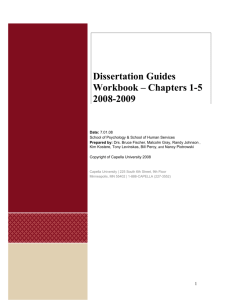Master
advertisement
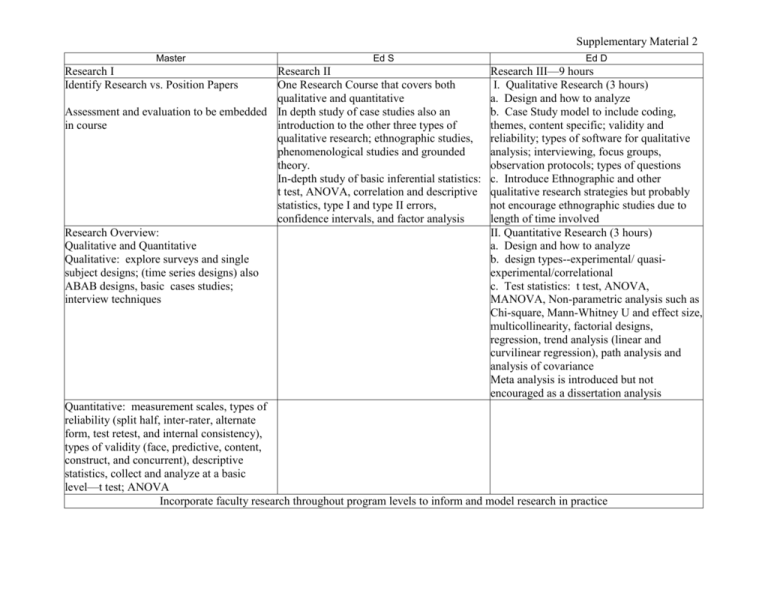
Supplementary Material 2 Master Research I Identify Research vs. Position Papers Ed S Research II One Research Course that covers both qualitative and quantitative Assessment and evaluation to be embedded In depth study of case studies also an in course introduction to the other three types of qualitative research; ethnographic studies, phenomenological studies and grounded theory. In-depth study of basic inferential statistics: t test, ANOVA, correlation and descriptive statistics, type I and type II errors, confidence intervals, and factor analysis Research Overview: Qualitative and Quantitative Qualitative: explore surveys and single subject designs; (time series designs) also ABAB designs, basic cases studies; interview techniques Ed D Research III—9 hours I. Qualitative Research (3 hours) a. Design and how to analyze b. Case Study model to include coding, themes, content specific; validity and reliability; types of software for qualitative analysis; interviewing, focus groups, observation protocols; types of questions c. Introduce Ethnographic and other qualitative research strategies but probably not encourage ethnographic studies due to length of time involved II. Quantitative Research (3 hours) a. Design and how to analyze b. design types--experimental/ quasiexperimental/correlational c. Test statistics: t test, ANOVA, MANOVA, Non-parametric analysis such as Chi-square, Mann-Whitney U and effect size, multicollinearity, factorial designs, regression, trend analysis (linear and curvilinear regression), path analysis and analysis of covariance Meta analysis is introduced but not encouraged as a dissertation analysis Quantitative: measurement scales, types of reliability (split half, inter-rater, alternate form, test retest, and internal consistency), types of validity (face, predictive, content, construct, and concurrent), descriptive statistics, collect and analyze at a basic level—t test; ANOVA Incorporate faculty research throughout program levels to inform and model research in practice Supplementary Material 2 Master Students emerge from program being good consumers of research can read and critique identify valid and reliable research understand and be fair (?) know different types of journals—refereed and non-refereed levels of refereed journals Action Research: design and complete action research at the classroom level for most departments Ed S Ed D III. Research Design/Proposal (3 hours) First level for full admission to Doctoral program— a. Write research intent (1-2 pages) that must be defended during an oral defense to a dissertation committee of at least three faculty members b. 4 Written questions developed by committee based on research intent paper are given to candidate before oral defense. Candidate has one month to answer questions. c. may create instruments and pilot; complete an item analysis to ascertain reliability and validity Applied Field Research Dissertation—minimum 9 hours Final project (needs to be a bound thesis Second defense—first 3 chapters project) to be data driven (dissertation proposal) Qualitative or quantitative or both Final defense—completed dissertation May serve as pilot for a dissertation or be a capstone experience for the Specialists Development of research problems may be collaborative between departments and result with individual capstone paper. Suggest shared subcommittees between department when topics overlap



